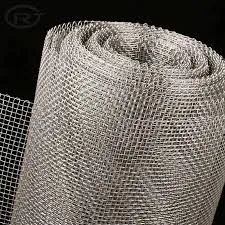-
+86 15030157877
-
sales@galvanizedmetalmesh.com
Dez . 03, 2024 12:26 Back to list
rabbit wire mesh factories
Understanding Rabbit Wire Mesh Factories
Rabbit wire mesh, commonly used in various agricultural and construction applications, refers to welded or woven wire fencing specifically designed to enclose rabbits and other small animals. The production of this essential farming material occurs in specialized factories, focusing on quality, durability, and adaptability. In this article, we will explore the intricacies of rabbit wire mesh factories, the manufacturing processes involved, and their vital role in modern agriculture.
The Importance of Rabbit Wire Mesh
Rabbit wire mesh plays a crucial role in safeguarding domestic rabbits, providing a secure environment for them to thrive. This type of fencing prevents escape while also protecting the animals from predators. Beyond rabbits, this mesh is suitable for other livestock and small animals, making it a versatile tool in animal husbandry. With the rising demand for ecological farming practices and the growing popularity of pet rabbits, the need for high-quality wire mesh has surged, prompting factories to ramp up production.
Manufacturing Process
The production of rabbit wire mesh involves several key steps
1. Material Selection The primary materials used in rabbit wire mesh are high-quality galvanized steel wires. This material is chosen for its rust resistance and strength, ensuring the longevity of the fencing. Some factories may also offer stainless steel options for enhanced corrosion resistance.
2. Wire Drawing The manufacturing process begins with wire drawing, where large coils of raw steel are pulled through a series of dies to achieve the desired diameter. This stage is crucial, as the thickness of the wire directly affects the strength and durability of the final product.
rabbit wire mesh factories

3. Welding or Weaving Depending on the factory's specialization, the next step involves either welding or weaving the wires. In welded mesh production, the wires are intersected and fused at points using electric resistance welding. The woven mesh, on the other hand, relies on a crisscross pattern, providing flexibility and resilience.
4. Galvanization After the mesh is formed, it undergoes galvanization, where it is coated with a layer of zinc to enhance its corrosion resistance. This process extends the mesh's lifespan, making it suitable for outdoor use where exposure to elements is significant.
5. Cutting and Bending Once the galvanization is complete, the mesh is cut into specified sizes and shapes as per customer requirements. Some factories also provide bending services, allowing for the creation of custom fencing solutions that meet specific needs.
6. Quality Control Before the final products leave the factory, they undergo rigorous quality control checks. This process ensures that the wire mesh meets industry standards regarding strength, durability, and resistance to wear and tear.
The Role of Technology
Modern rabbit wire mesh factories increasingly rely on advanced technology to streamline production processes. Automated machinery enhances efficiency and precision, resulting in consistent quality across batches. Additionally, computer-aided design (CAD) software allows for customized fencing solutions tailored to individual customer specifications.
Conclusion
Rabbit wire mesh factories play a vital role in the agricultural sector, providing essential products that protect livestock while promoting effective farming practices. The manufacturing process, from material selection to quality control, ensures that farmers and pet owners receive reliable and durable fencing solutions. As the demand for sustainable and humane animal husbandry continues to grow, rabbit wire mesh factories will remain integral in supporting these principles, adapting with technology and innovation to meet the evolving needs of the market.
-
Welded Gabion Solutions: Durable & AI-Enhanced Designs
NewsAug.01,2025
-
Premium Welded Gabion Mesh | Robust & Eco-Friendly
NewsJul.31,2025
-
Premium Eco-Friendly Roof Tiles | Affordable & Durable
NewsJul.31,2025
-
Premium Roof Tiles for Durable & Stylish Roofing Solutions
NewsJul.30,2025
-
High-Quality Roof Tiles for Durable & Stylish Roofing Solutions
NewsJul.29,2025
-
High Quality Square Wire Mesh Manufacturer & Supplier for Wholesale
NewsJul.29,2025



